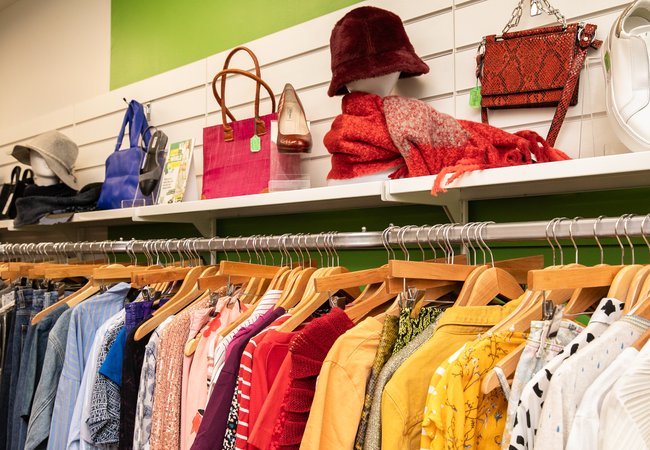
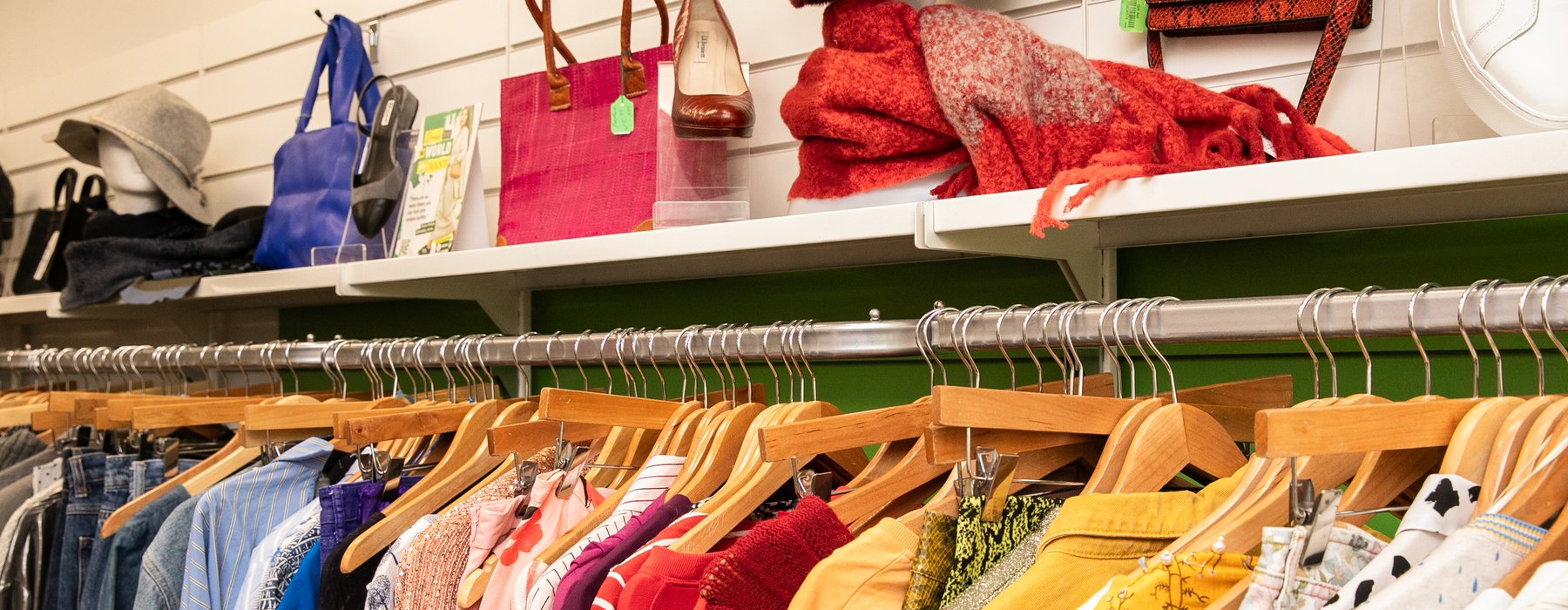
The water cost of fast fashion
Mateo Adarve Zuluaga, Oxfam's Climate Justice Researcher, dives into the world of second-hand garments and their connection to climate inequality. Drawing from research and conversations with colleagues around the world, he explores the challenges and opportunities of embracing pre-loved clothing in our changing climate.
- The water footprint of clothing used in the UK, annually, is a whopping 8 billion cubic metres
- Producing a single cotton t-shirt requires 5,400 bottles of water
- The water needed to make one pair of jeans would meet the daily drinking needs of 4,750 people
- Climate change affects the countries where our clothes are produced first and worst.
- We need to transition from the current fast fashion model to a more sustainable and ethical one
The hidden costs of our wardrobe
Textiles and garments are woven into the fabric of society, connecting lives across the globe. This industry touches everyone from the cotton farmer to the factory or home worker, and ultimately to the consumer who finds comfort in well-made clothing.
Since the 1980s, the fashion industry has transformed, driven by increasing consumption and the rise of fast fashion. While the wealthiest enjoy inexpensive and readily available garments, the true cost is borne by communities worldwide and our natural environment.
One key example of this impact is water.
When we slip on a new pair of jeans or a fresh t-shirt, it’s difficult to wrap our heads around the true environmental cost of such a simple garment, particularly in terms of water usage.
Consider this: The water used annually to produce clothing for the UK alone amounts to 8 billion cubic metres. This volume could meet the entire UK population's water needs for two years or fill Loch Ness, Scotland's largest lake by volume.
On a more personal level, the average Briton buys 26.7kg of garments yearly. The water needed to produce this amount could supply a typical UK household for over 18 months. If every person in the UK bought one pair of second-hand jeans this September instead of new ones, we could save enough water to fill Lake Bala in Wales five times over, or conserve 1 trillion bottles of water.
This water consumption is in addition to the carbon footprint of our clothing. Remarkably, textile production contributes more to climate change than international aviation and shipping combined.
But the main water impact of our clothing extends beyond UK shores. Globally, 90% of garment production is outsourced to low- and middle-income countries. While we consume 'affordable' fashion, water depletion and pollution disproportionately affect Global South communities that farm raw materials and manufacture clothes, significantly contributing to water scarcity in these regions.
This situation underscores the climate inequality inherent in the fast fashion model. While fast fashion consumption primarily occurs in countries like the UK, the environmental impacts and compounded consequences of climate change are felt most acutely in production countries.
This imbalance partly stems from the colonial era when the extractive garment production system was established. For instance, the global cotton empire that fuelled British imperialism created economic flows that still benefit the UK by outsourcing water and carbon footprint from garment production.
Oxfam
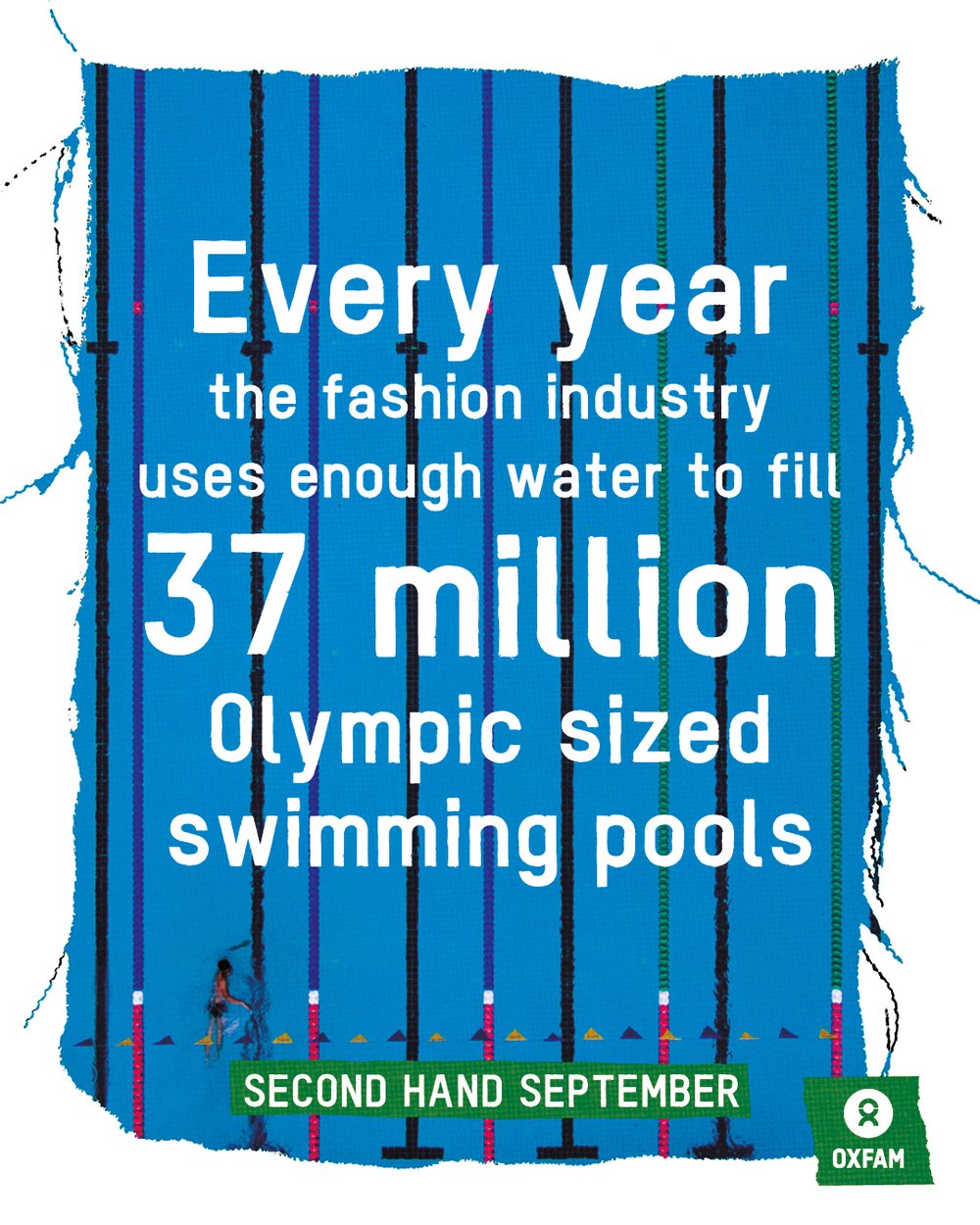
Stitched into a corner, the Global South’s double bind
For communities in the Global South, the fashion industry presents a complex dilemma at the heart of this environmental crisis.
On the one hand, the fashion industry is depleting and polluting local water resources at an alarming rate, creating a level of water consumption that puts immense pressure on local water supplies in production regions.
Let’s not forget the industry's significant contribution to climate change, accounting for 8-10% of global greenhouse gas emissions. This means that if the garment industry were a nation, it would be the fourth largest climate polluter on Earth.
And the changing climate only exacerbates these water issues, as many garment-producing areas are already facing increased water stress due to changing weather patterns.
On the other hand, the garment industry often represents the primary source of livelihood for many in these regions. It provides jobs, albeit often in poor conditions and with low wages, to a predominantly female workforce.
This situation forces countries and communities in the global south into an impossible choice: continue supporting an industry that provides essential jobs but depletes their water resources, and contributes to the climate crisis, or help protect their water and environment at the cost of their livelihoods.
It's a stark example of climate injustice, where those least responsible for climate change bear the brunt of its impacts.
The call for a new paradigm and a just transition
The fashion industry's immense water and carbon footprint and the double-bind it creates demand a radical reimagining of how we produce and consume clothing. We face the collective challenge of transitioning from the current fast fashion model to a more sustainable and just paradigm.
A key concept in this new model is the circular economy. Instead of the traditional "take-make-dispose" linear model, a circular approach emphasises practices like repair, reuse, redistribution, upcycling, and recycling. For instance, extending the lifespan of clothes by just 9 months could cut waste by 22% and save 33% of water consumption.
Buying clothes on the second-hand market is another powerful tool in this circular model. Research shows that second-hand trading has the potential to reduce carbon emissions from fast fashion consumption by a staggering 90%. This is why we started the Second-Hand September initiative, to make thrifting an accessible option for everyone.
Water stewardship is a key practice at the heart of this new paradigm. The industry has the opportunity to move beyond mere water management to a more holistic approach that recognises water as a shared resource. This includes strategies to restore freshwater and marine ecosystems in production regions, which can enhance resilience to climate change and protect communities.
This transition, in order to be fair, is bound to address the situation of countries and workers currently reliant on raw material production and garment manufacturing. It's not enough to simply reduce demand from consumers when so many livelihoods are at stake–governments, retailers, and consumers in the Global North need to support suppliers and workers to switch to sustainable production.
Global fashion brands have the responsibility to pay their overseas workers a living wage and to invest in the transition, for instance, by leveraging the potential of renewable energy in the garment sector and diversifying into green industries and jobs related to the repair, reuse, redistribution, upcycling, and recycling of garments.
Governments are responsible for providing the climate finance needed to help low- and medium-income countries transition to clean energy and sustainable practices, while also incentivising alternative sustainable livelihoods in the circular economy. This includes providing social protection and retraining for garment workers displaced by the shift away from
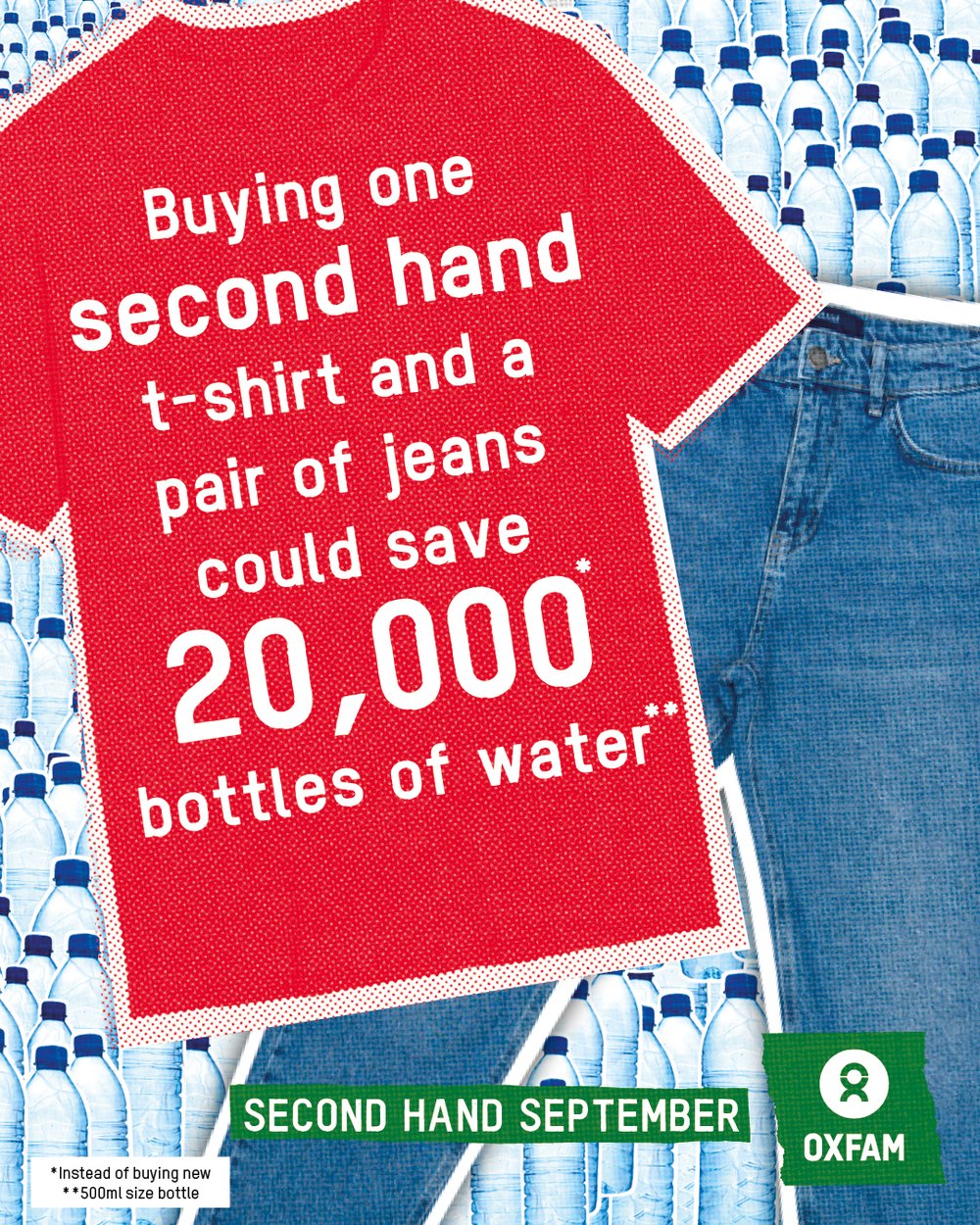
Women at the heart of a just transition
The garment industry workforce is predominantly female, with women making up 60% globally and up to 80% in some regions. These women face significant challenges, including an 18.5% gender pay gap. They often bear the brunt of water scarcity, being responsible for unpaid care work and water-related household tasks.
However, women are not just disproportionately affected by the current system—they are also crucial agents of change. They possess intimate knowledge of their communities' needs, the challenges they face, and the management of collective resources like water. Any solution to the fashion industry's environmental and social problems must include their agency and expertise.
Women-led community approaches are moving beyond extractive practices to focus on regeneration. The objective is not only to reduce environmental harm, but also to restore ecosystems. In the garment industry, this can be applied through circular models and better water stewardship.
Women's leadership is crucial to ensure that the transition to a more sustainable fashion industry is both just and inclusive.
Turn individual actions into collective solutions
Each of us has the power to reduce the environmental impact of clothing. Whether it's embracing Second-Hand September, extending the life of our favourite jeans, or simply raising awareness about the water footprint of fashion and the challenges faced by communities around the world in producing our clothes, every action counts.
Consumers in high-consumption countries can support responsible practices and protect livelihoods by choosing second-hand clothes, and clothing that is fairly traded, sustainably produced, and ethically sourced.
Engaging with global fashion brands to encourage stronger climate action in the Global South can amplify these efforts, as well as supporting climate activists and garment workers' initiatives to create a unified voice for change.
You can learn more about the Second-Hand September by clicking here. Keep your eye on Oxfam's social media channels and website for the upcoming release of our comprehensive report on the water cost of fast fashion and climate inequality.
Sources:
Methodology note available here.
More posts like this
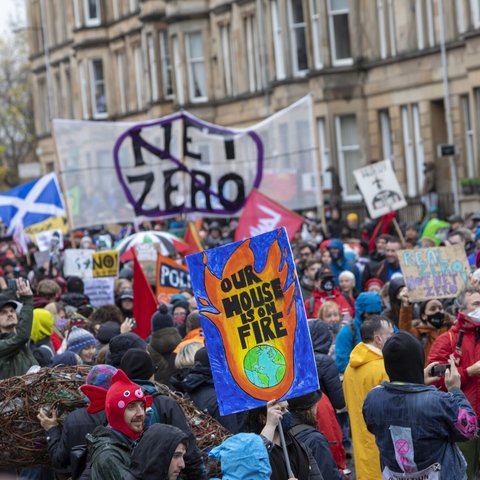
People who’ve done the least to cause the climate crisis are being pushed deeper into poverty, fighting for their lives due to extreme and unpredictable weather.
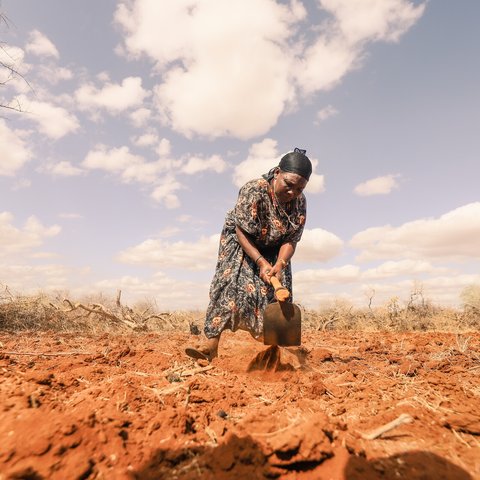
As global temperatures rise, droughts are becoming more and more frequent.
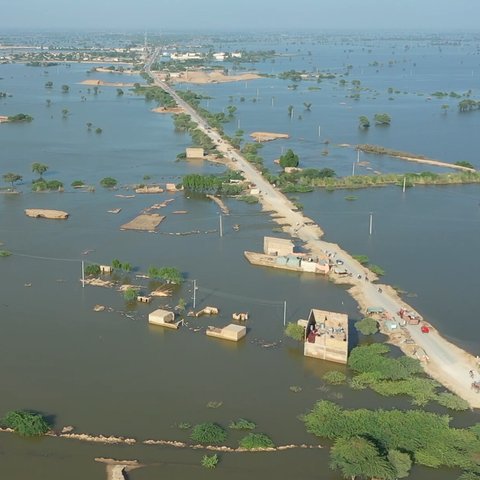
11 Jan 2023
Climate change results in more intense rainfall, which increases the chances of flooding.